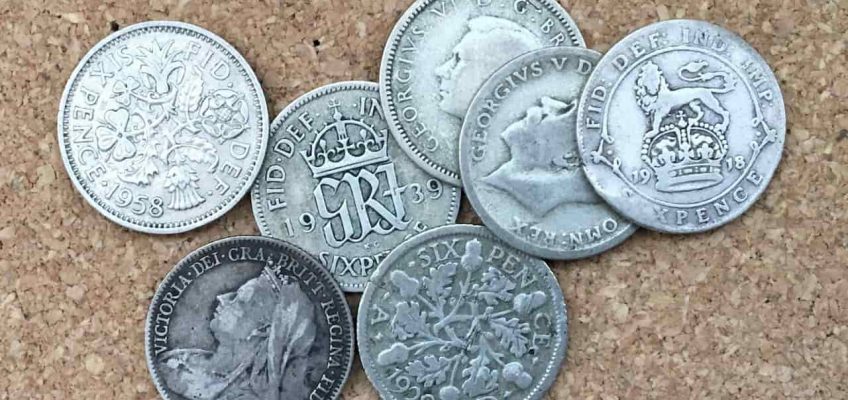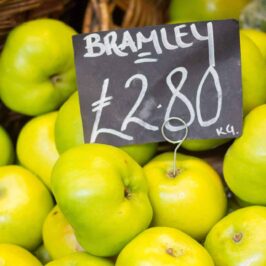All About The Sixpence Coin
Holding a Sixpence Coin in your hand is touching a piece of history. Whether you’re new to coin collecting, a seasoned numismatist or just curious. They’ve been part of British culture for centuries. From royal weddings to Christmas puddings, the sixpence (also known as a tanner or sixpenny bit) has left its mark.
The Sixpence: A Historical Journey
The sixpence coin first appeared in 1551 during the reign of Edward VI. That’s nearly 500 years ago! The coin was worth exactly what its name suggests – six pennies.
But why six pennies? It was part of a larger effort to standardise English currency. The sixpence filled a gap between the threepence and shilling coins. It quickly became a staple in daily transactions.
Over the centuries, the sixpence saw many changes. Different monarchs left their mark on the coin. Each new design reflected the spirit of its time. The coin survived civil wars, industrial revolutions, and two world wars.
The sixpence wasn’t just used in England. It spread throughout the British Empire. From Australia to Canada, people used this little coin. It became a symbol of British influence around the world.
Sixpence Portraits
The sixpence coin features the portraits of British monarchs throughout its history. In total, there are 20 different monarchs who have appeared on sixpence coins, reflecting a rich history of British coinage from the mid-16th century until the late 20th century
Edward VI (1551-1553) – The first sixpence was minted during his reign.
Mary I (1553-1558) – Sixpences were issued under her rule.
Elizabeth I (1558-1603) – Continued the tradition of minting sixpences.
James I (1603-1625) – Sixpences were minted during his reign.
Charles I (1625-1649) – Featured on sixpences before the English Civil War.
1649 – 1660 – Coins minted during this period are known as Commonwealth coinage. They featured a distinctly different design from the previous monarchical issues.
Charles II (1660-1685) – The first monarch after the Commonwealth to issue sixpences.
James II (1685-1688) – Minted during his brief reign.
William III and Mary II (1689-1702) – Issued jointly as co-monarchs.
Anne (1702-1714) – Sixpences were minted during her reign. A rare example can be seen here from 1707, worth £27,000.
George I (1714-1727) – Featured on sixpences after the Act of Settlement.
George II (1727-1760) – Continued the tradition of minting sixpences.
George III (1760-1820) – His reign saw numerous variations of the sixpence design.
George IV (1820-1830) – Minted during his short reign.
William IV (1830-1837) – Featured on sixpences during his time.
Victoria (1837-1901) – A significant number of sixpences were issued, including commemorative versions for her Golden Jubilee in 1887.
Edward VII (1901-1910) – Minted shortly after Victoria’s reign.
George V (1910-1936) – Featured on sixpences with various designs.
Edward VIII (1936) – Very few were minted before he abdicated; none circulated widely.
George VI (1936-1952) – Minted during and after World War II.
Elizabeth II (1952-1971) – Queen Elizabeth was the last monarch to feature on circulating sixpences before decimalisation.
Sixpence Traditions
The sixpence holds a special place. There’s an old tradition of putting a sixpence in a bride’s shoe. It’s believed to bring good luck and wealth to the newlyweds. This custom is still alive today.
Another tradition involves Christmas puddings. Mixing a sixpence into the pudding batter. Whoever found the coin in their slice would have good luck for the coming year. It was a fun way to add excitement to holiday meals.
The sixpence also left its mark on language. Ever heard the phrase “take care of the pennies, and the pounds will take care of themselves”? It originally used “sixpences” instead of “pennies”. This shows how common the coin was in everyday life.
Understanding the Numismatic Details
Taking a closer look at the sixpence itself. The sixpence was a small coin. It measured about 19.4mm in diameter. That’s smaller than a modern 5p coin. It weighed around 2.83 grams. The size made it easy to carry and use in daily transactions.
The Silver Sixpence
For most of its history, the sixpence was made of silver. The silver content varied over time. Early sixpences were 92.5% silver. This is known as “sterling silver”. Later versions used a lower silver content to save on costs.
The 1946 Coinage Act marked a significant transition in British coinage, particularly affecting the sixpence coin. Minting of silver coins stopped completely in 1946, as it transitioned fully to base metal coins for general circulation.
The coin was made from silver until 1947, after which it was produced in cupronickel. This new alloy was 75% copper and 25% nickel.
Following decimalisation in 1971, the sixpence was valued at 2.5 new pence (or £0.025)
The Design
The design of the sixpence changed over time. The obverse (front) features the reigning monarch’s portrait.
Early designs featuring inscriptions like “EXVRGAT DEVS DISSIPENTVR INIMICI” and “QVAE DEVS CONIVNXIT NEMO SEPARET” during James I’s reign.
The reverse (back) varied over time.
- Four shields arranged in a cross, used from Charles II through George III.
- Royal coat of arms surrounded by the Garter, used after the 1816 recoinage.
- “SIX PENCE” in the middle with a crown above and wreath surrounding, used for William IV, Victoria, and Edward VII
- Crowned shield design (briefly used in 1887 before being withdrawn)
- Lion surmounting a crown, used for George V from 1911 to 1926
- Six oak sprigs with six acorns, used for George V from 1927 to 1936
- Crowned GRI (Georgius Rex Imperator) design, used for George VI from 1937 to 1948
One of the most famous designs came in 1887, featured a bouquet on the reverse, designed by Edgar Fuller and Cecil Thomas. The symbols of the UK – the thistle , rose, leek and clover, representing all four nations of the United Kingdom. This design lasted for 50 years. Many people still associate this image with the sixpence.
Minting History: When and Where
Over its long history, the coin was produced at various locations. Each mint left its own mark on the coins it produced.
The Royal Mint in London was the main producer of sixpence coins. But it wasn’t the only one. During times of high demand, other mints stepped in. These included mints in York, Bristol, and even as far as Australia.
Mint marks help identify where a coin was made. These small letters or symbols appear on the coin. For example, “I” indicated the Tower of London mint. “Y” stood for York. Collecting coins from different mints is a hobby in itself.
The number of sixpences minted varies greatly from year to year. This variation affects the rarity and value of coins today. Certain years are particularly notable for sixpence collectors.
The last circulating sixpence was minted in 1967, due to the decimalisation of British currency in 1971. However, the coin remained legal tender until 1980 when it was demonitised. It was worth 2.5 new pence after decimalization.
Even after it left circulation, the Royal Mint continued to produce sixpences. These were for collectors and to keep traditions alive. The last of these collector sixpences was minted in 2016.
How much is a Sixpence Coin Worth?
So, you’ve got a sixpence. How much is it worth? The answer isn’t always simple. Several factors come into play when valuing these coins. From condition to mintage.
The metal content also affects value. Silver sixpences are generally worth more than cupronickel ones. This is especially true for older coins with high silver content.
It’s important to note that most sixpences aren’t extremely valuable. Common dates in average condition might only be worth their silver content. But don’t let that discourage you. The historical value of these coins goes beyond money.
Grading coins accurately takes practice. If you’re serious about valuing sixpences, consider getting expert opinions. Professional grading services can provide detailed assessments of your coins.
Remember, the coin market can be volatile. Values can change based on collector interest and market trends. Always check current prices when buying or selling.
Notable Sixpence and Errors
Varieties and errors excite collectors. Varieties are intentional differences in coin design. For example, in 1887, two different reverse designs were used. One had a withdrawn design, making it rarer and more valuable.
1952 Sixpence. This is considered the rarest sixpence in history. Only a small batch was issued prior to the death of King George VI and sent to Jamaica. No other sixpences were minted that year except for this shipment, making it extremely rare.
Errors, on the other hand, are mistakes. These can happen during the minting process, including double strikes and off-centre strikes.
Errors and varieties can be valuable to collectors. However, it’s important to be cautious. Always seek expert opinions when dealing with unusual coins.
Small but mighty
The sixpence may be small, but its impact is mighty. From its origins in Tudor England to its final days in the 20th century, it’s been a constant in British life. It’s seen the rise and fall of empires, the change of dynasties, and the transformation of society.
So next time you come across a sixpence, take a moment to appreciate it. Hold it in your hand and think about all the hands it passed through before yours. That’s the real magic of coin collecting – connecting with history, one small piece at a time.







